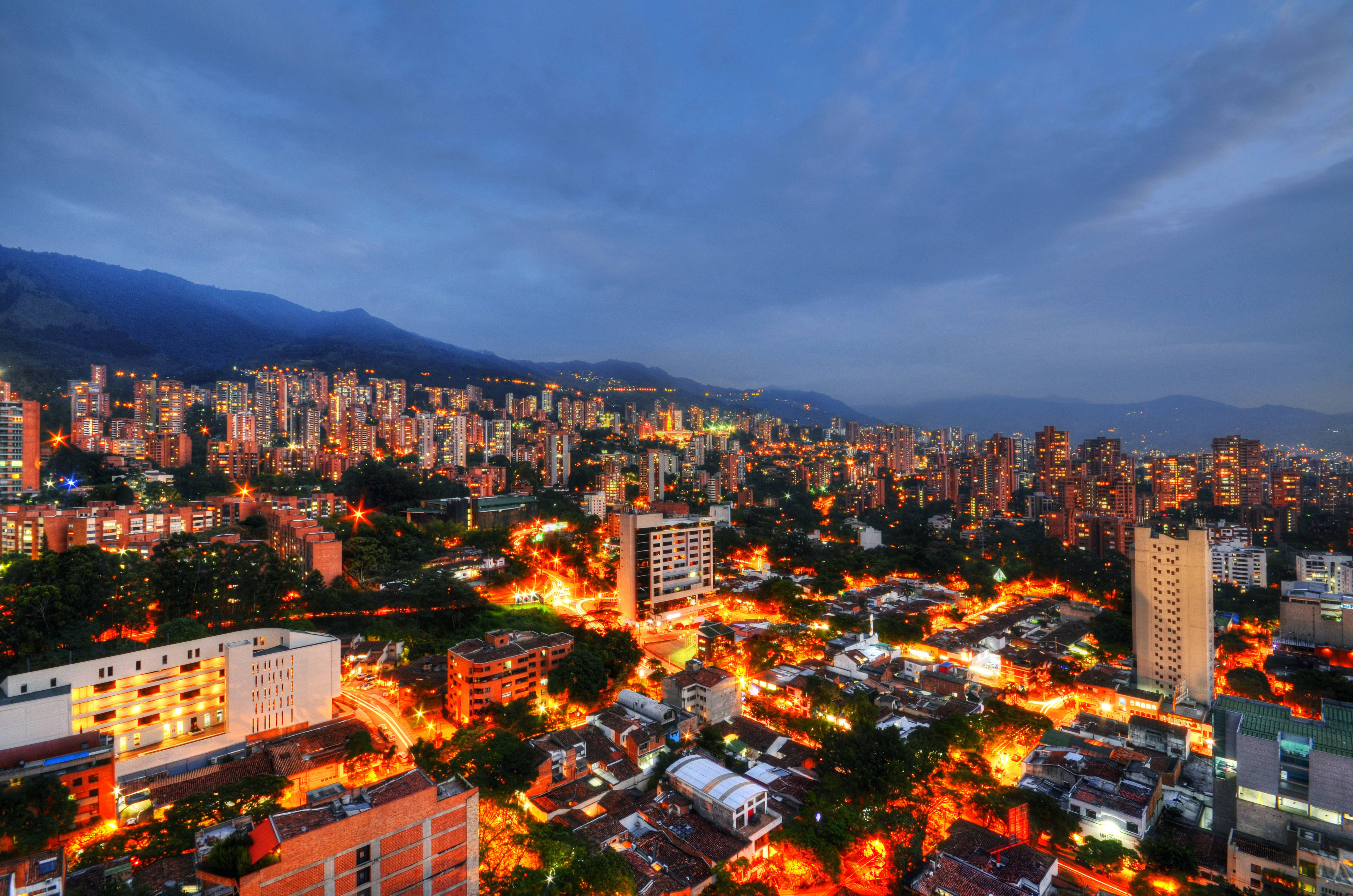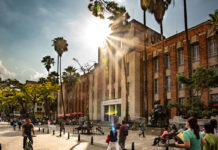Note: This review contains spoilers.
Picture a Shakira doppelganger swaying in a crowded, warm-lit room with revealing clothing.
Her hair is down on her face, her eyes are closed, her hands might sensually toss her hair around while she dances to the music.
Picture all of this in slo-mo.
This is the summary of ¡Que Viva La Música!, the new Colombian film directed by Carlos Moreno, and while watching Paulina Dávila dance is mesmerizing, it is certainly not enough.
The Movie’s Premise
Instead of “based on” the movie used “inspired by” when they defined their connection to the Cali author, Andrés Caicedo’s novel ¡Que Viva la Música! This makes sense because between the movie and the book there are so many gaps and differences that counting would prove pointless.
The movie is about María del Carmen Huerta, “La Mona,” frequently called by others “Pelada,”(a Colombian slang term for ‘young girl’) who comes from a high-class family in Cali. From the beginning of the movie, she appears immediately chaotic and rebellious, without reason or explanation, just as a trait.
The film begins by highlighting the importance of the river in Cali, leading to the idea that everything would be eventually linked to the landmark, but the idea quickly fades and doesn’t make a comeback.
La Mona is shown over and over again dancing at high-class parties, with friends, chasing stereos randomly and acting irreverent, with a plethora of sex scenes. Once she sees the emptiness of her bourgeois nightlife, she escapes and stumbles upon salsa culture and lifestyle with which she becomes obsessed.
She meets a series of people that lead her into a careless life of dancing, nightlife, music, and sex.
The Characters
First off, we have the main character, María “la Mona”. We know that she comes from a high-class family with a mom, a dad, and a brother. They are shown in a family photo at the beginning of the movie and her parents in one scene after that.
María’s brother is a thin young man with messy hair who appears several times in the movie, either in the pool, by the pool, or around the house in his swim shorts, always with a crazy expression, and never says a word or does anything.
María’s friend and inspiration Mariángela is a depressed brunette version of María, who is apparently in love with her.
Lacking happiness in her life of sex, drugs, money, and music, she throws herself off a high-rise after a night of partying, with María next to her smiling. She is the only other “important” female in the film.
Then, we have the line of men in María’s life, all with no real backstory or strength, as characters:
- Ricardito “El Miserable”: A friend of María’s who pines over her indifference towards him.
- Leopoldo: An American with absolutely nothing to add to the story but a few lines of English. He switches off between Mariángela and María for a night.
- Rubén: A DJ for events and parties, where he meets María, sleeps with her, and then briefly tells her a few things about his love of Salsa and Richy Ray.
- Don Rufián: Rubén’s father and boss, who while his son plays as a DJ, robs from the guests wallets and coats, he also sleeps with María and gives her a ring he stole.
- Bárbaro: A gangster who grew up on the streets and is really serious about defending his territory and stealing from foreigners, he lives in a type of forest teepee and drives a motorcycle.
None of these characters are developed, not even María herself. We are left to watch, confused, and wait at what the wanna-be storyline will throw at us next (not in a fun way).
The Music: Salsa You’ll Love
The music, of course, is great. From Rolling Stones to Richie Ray, to Salsa Choke, it makes you want to dance with María, or at least look as good as she does on the dance floor.
The novel mentions over ninety songs from Caicedo’s time. The movie tries hard to make music the main character, the only reason behind anything, the only goal, Marías North Star.
So there’s a bright side: if they make a soundtrack it will probably do alright…maybe.
But…What Happened?
The movie, unfortunately, failed. More a collage of scenes with aesthetic cinematography stitched together randomly than a film, it simply fell short of expectations.
Since they adopted the name, spectators were hoping for something more faithful to the novel, which is iconic to youth and 70s culture in Cali. We wanted context: political, historical, any context!
However, this is a film in contemporary times, not forty years ago, so a lot of these things that are iconic don’t make sense. When María talks about her disoriented generation, I have to think of the generation of the 70s, not the one now.
The dialogues, and for that matter the monologues, aren’t believable. There’s a scene in which María and Bárbaro are relaxing on the river and run into a foreigner traveling alone, an American.
At first, he doesn’t seem to understand anything Bárbaro asks him, struggling to answer back. However, when Bárbaro insists, with long, difficult questions, the foreigner seems to be able to understand and answer. The acting in this scene is awful; the dialogue is entirely unreal.
The monologues are all María’s, taken mostly word-for-word from the novel narrated by her character. However, the actions aren’t enough to speak for the story and have to be backed-up by her monologue that is far too literary to be followed.
I’m no expert on film, but I do know that a movie that relies almost solely on dialogue isn’t doing its job.
As for the appearance of foreigners, we see three in total. Leopoldo, the aforementioned, the American on the river, and a German in a field outside of Cali eating mushrooms with a Colombian.
They are not portrayed well, folks, so if you feel sensitive to that, do not watch the movie. Leopoldo is a drug-addict with no value to the movie, the American gets mugged and humiliated, and the German is murdered violently.
I don’t think I wasted money seeing it, but this is also definitely not the future of Colombian film.
You can find ¡Que Viva La Música! in Cine Colombia theaters in the city, unfortunately it is only in Spanish with no subtitles.











